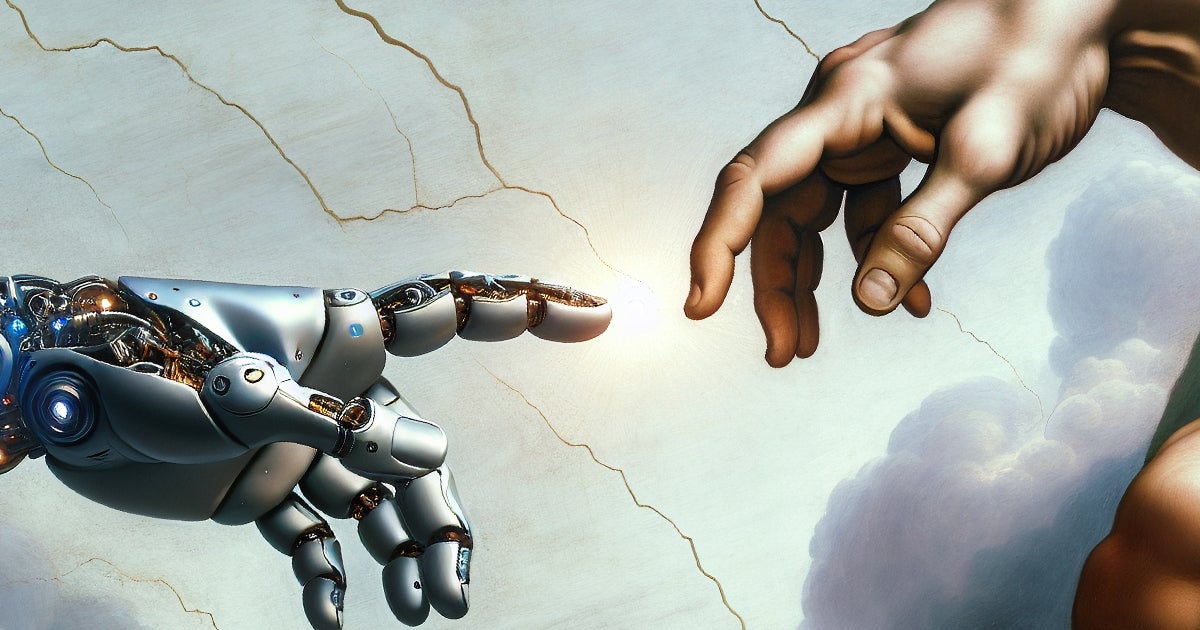
by Ana Elise Lowe • 3 minutes
“Alexa, can you pray with me?”
It’s a phrase that once sounded futuristic, yet now it’s a part of our daily life. As artificial intelligence (AI) continues to evolve, so does the way people practice their faith.
From AI-powered devotionals and chatbot pastors to digital prayer rooms and ChatGPT-generated sermons, religious expression is being reshaped in real time. What once took place solely in sanctuaries is now occurring through screens, voice assistants and algorithm-driven platforms.
This intersection of religion and technology offers incredible opportunity and growing concern. And at the center of it lies a crucial question: What does religious freedom and expression look like in the age of AI?
AI’s increasing role in religious life is undeniable. Apps such as Hallow and Abide offer 24/7 spiritual support through guided prayer, Scripture readings and AI-personalized devotionals. Chatbots are being used to simulate conversations with spiritual mentors or even biblical figures. Sermon-writing tools now generate outlines tailored to a congregation’s demographic profile.
These technologies provide accessibility, convenience and personalization. These features are especially meaningful to individuals who are isolated, seeking guidance outside of traditional church hours, or who are new to the faith.
The Vatican acknowledged this potential in a 2025 ethics statement, emphasizing that it will “require responsibility and discernment to employ AI’s immense potential to benefit rather than degrade humankind.”
Faith-based tech is not inherently dangerous. In fact, it is already helping expand spiritual access to millions. But the deeper concern is what might be lost if faith becomes too dependent on artificial delivery.
This is where technology risks the development of a shallow faith. While AI can generate spiritual content, it cannot replicate spiritual relationship. It may mimic a prayer, but it cannot commune with God. It may generate a sermon, but it cannot minister to the human heart.
Heidi Campbell, professor of communication at Texas A&M and author of Digital Religion, explains the dilemma this way:
“Religious meaning is not simply ‘downloaded’ from religious texts or leaders, but is actively constructed through the choices, interpretations and practices of believers as they engage with digital media.”
Faith is not a formula; it is a relationship. While tech perhaps can support that relationship, it cannot replace it.
Even more pressing is the issue of religious liberty in a digital-first world.
Major platforms have been criticized for flagging or deprioritizing religious content. If AI systems become the arbiters of “acceptable” spiritual expression, it could result in the filtering or moderating of lessons, sermons or doctrine.
This risk to religious freedom is compounded by the scale and speed of AI deployment. As algorithms control more of what we see and hear, ideological bias grows, whether intentional or not. Religious viewpoints could be downranked, censored or reshaped without users ever knowing what’s happening on the other side of the screen.
In a 2024 address at the Davos Summit, Pope Francis warned that AI could worsen the global “crisis of truth”, increasing misinformation and eroding confidence in authentic belief systems.
It’s not just religious leaders who are warning of these dangers. Greg Epstein, a humanist chaplain at Harvard University, agrees that “a major source of concern is that some people are treating AI itself as a higher power.”
“If religious and secular people aren’t careful, what artificial intelligence is promising or threatening to do is really supersede religion or outpace it,” Epstein said.
For faith to remain free, it must also remain visible. And that visibility must not be subject to the whims of algorithmic design.
Throughout history, the church has embraced new forms of communication, from the printing press to the radio, to television and livestreams. Each era introduced risk, but also opened new doors for the free exercise of religion.
What makes AI different is its creative autonomy. It doesn’t just broadcast religious messages, it generates them. It doesn’t playback sermons, it drafts them. It responds to questions and offers conclusions.
This shift makes ethical oversight essential. And it means people of faith will have to be even more vigilant about their rights.
The collision of faith and AI is here. The challenge is to ensure that freedom of religion flourishes and doesn’t become filtered or censored. Religious expression must remain rooted in the freedom to believe, speak, gather and worship without interference. Because no matter how sophisticated systems become, truth and our rights are not generated by code, but are revealed and granted by God.